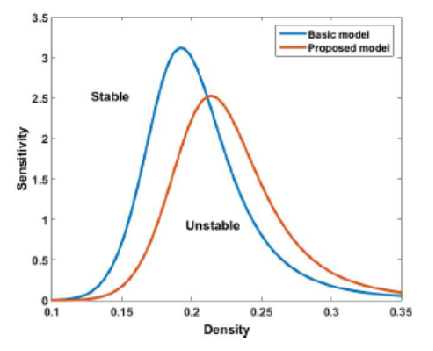


Indian Journal of Science and Technology
Year: 2024, Volume: 17, Issue: 26, Pages: 2708-2718
Original Article
Meenakshi Mehra1, Sunita Yadav1, Poonam Redhu1∗
1Department of Mathematics, Maharshi Dayanand University, Rohtak, 124001, Haryana, India
*Corresponding Author
Email: [email protected]
Received Date:25 January 2024, Accepted Date:06 March 2024, Published Date:02 July 2024
Objectives: In order to control and manage the traffic flow in contexts of congestion, real-time highway traffic flow models play a significant role in intelligent transportation system. The objective of our investigation is to examine the effect of psychological driver sensitivity (PDS) when coupled with passing behaviour. Methods: In this study, we developed the lattice hydrodynamic (LH) model which is a good and simple representation for solving traffic problems. Its variants have been valuable tools in traffic research and also contributed to our understanding of traffic phenomena and the development of traffic management strategies. The effect of the proposed LH model with the factor PDS and passing is examined through linear stability analysis. Employing nonlinear stability analysis, we are able to establish the permissible range of PDS values in conjunction with a passing constant, ensuring the existence of kink soliton solution for the mKdV equation. Findings: To validate our theoretical findings, we conducted numerical simulation, conclusively demonstrating that the integration of PDS with passing in the proposed model, can efficiently mitigate traffic congestion. When we fix the passing coefficient and vary the PDS coefficient, we identify the enlargement of stable region with small PDS values. Similarly, by fixing the PDS coefficient varying passing coefficient reveals the enlargement of stable region with small passing values. Novelty: Results displayed that the stability performance of the proposed model is higher than the existing LH model with passing and found that our proposed model performs better than existing models to alleviate traffic congestion and improve traffic flow.
Keywords: Traffic flow, Lattice hydrodynamic model (LHM), Psychological driver sensitivity (PDS), Passing effect, Stability
© 2024 Mehra et al. This is an open-access article distributed under the terms of the Creative Commons Attribution License, which permits unrestricted use, distribution, and reproduction in any medium, provided the original author and source are credited. Published By Indian Society for Education and Environment (iSee)
Subscribe now for latest articles and news.